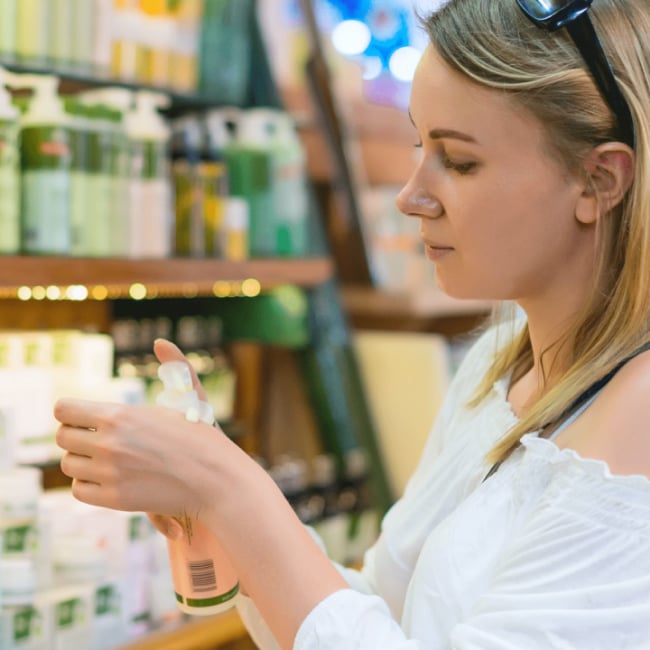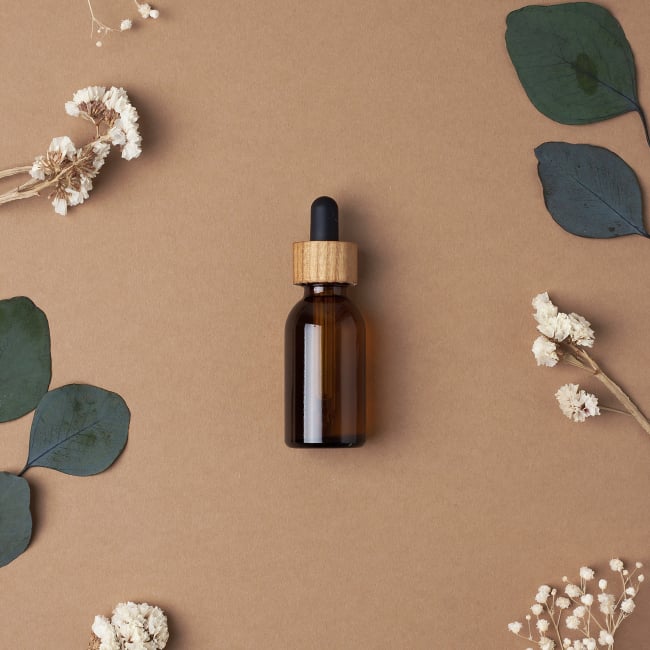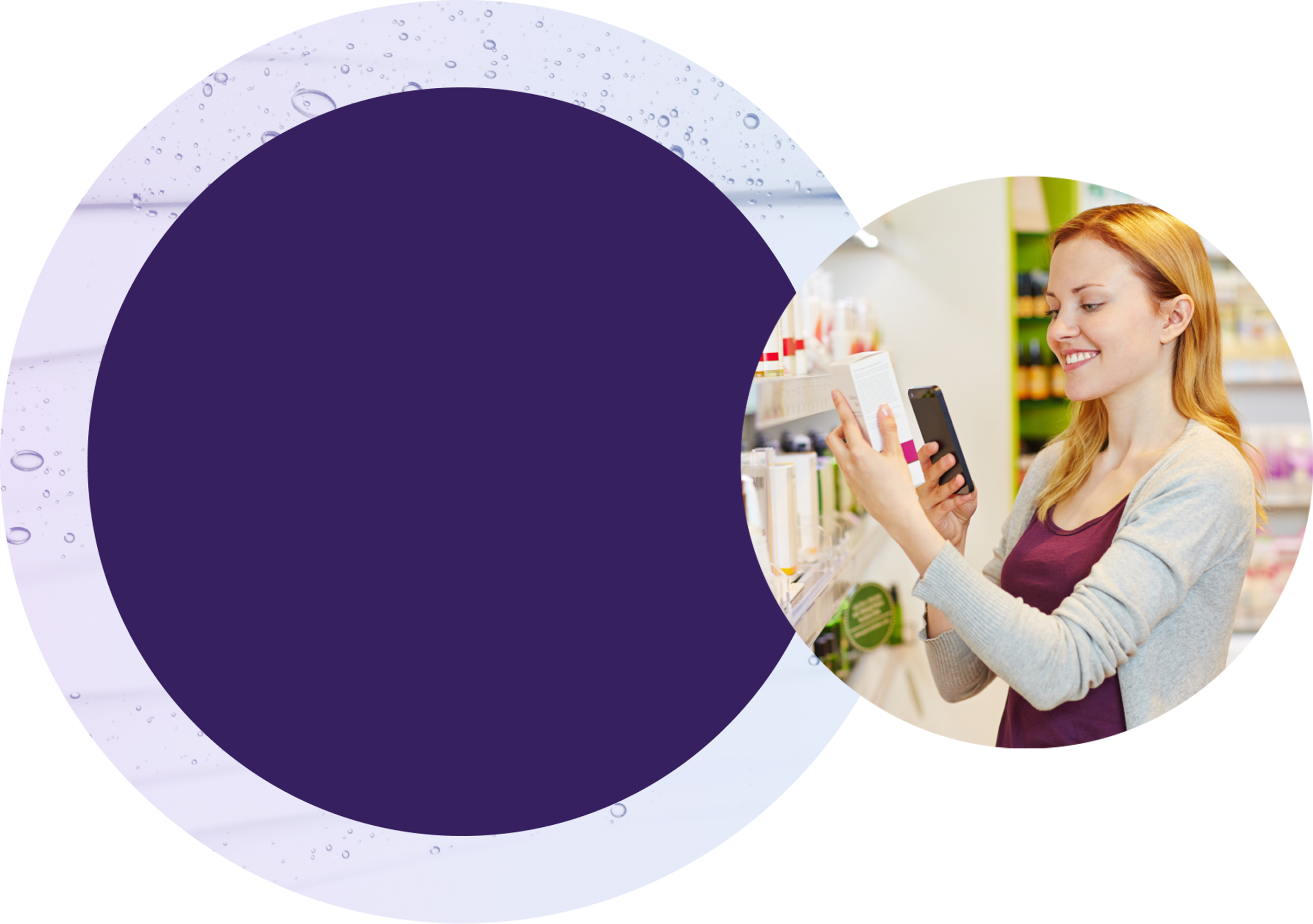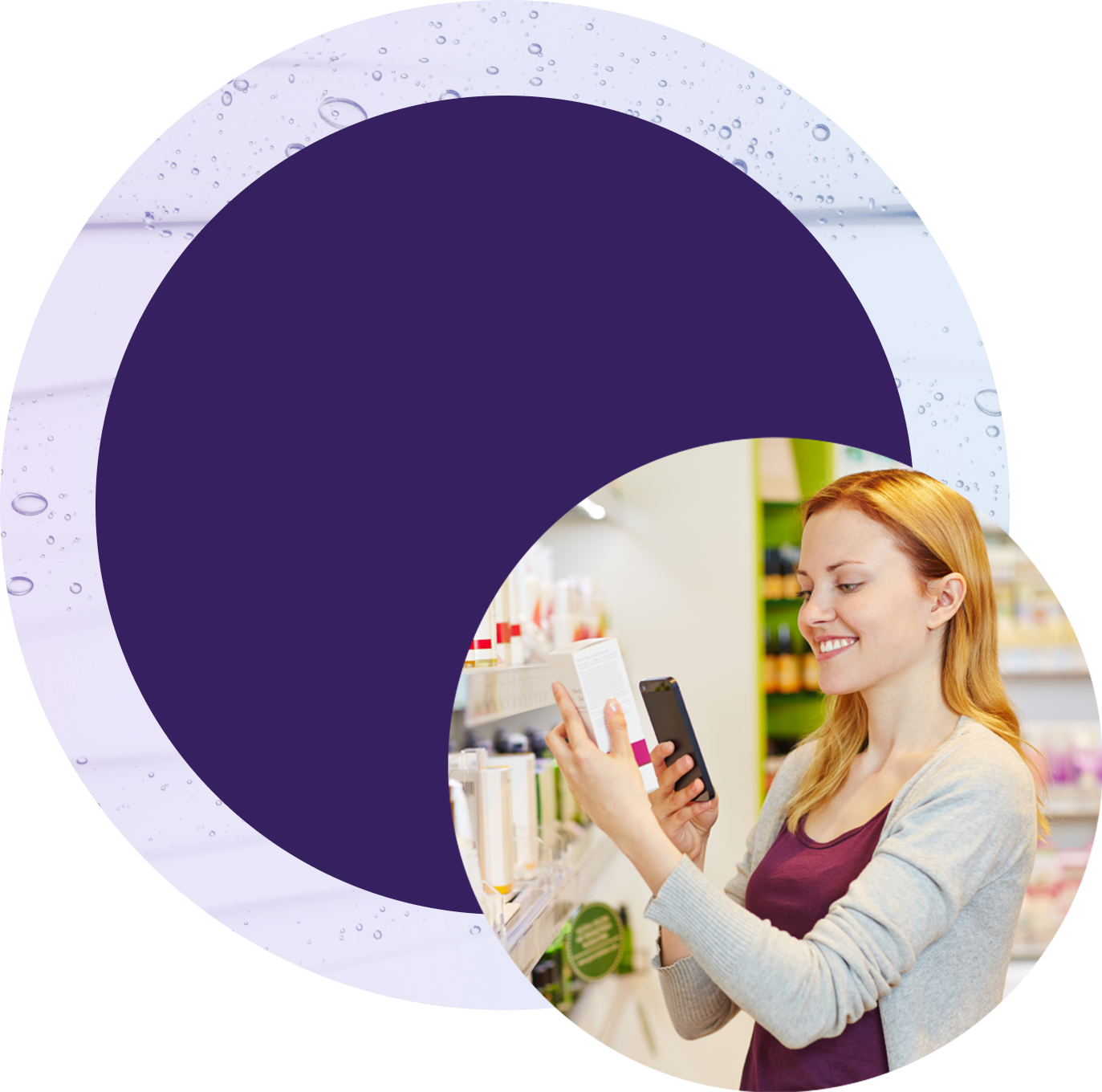INFO / ABOUT THE GUIDE / Decoding Labels
Decoding Labels
Confused by the labels on cleaning products? EWG helps you sort facts from hype.
Active ingredient
“Active ingredients” in cleaning products are usually antimicrobial pesticides added to kill bacteria, viruses or molds. Avoid them – they’re hazardous chemicals, and you rarely need them to get your house clean.
Many common dish and hand washing soaps contain the pesticide triclosan. They don’t clean any better than plain soap and water or provide extra protection against illness. But they do wash down the drain, where they are often toxic to aquatic algae, fish and wildlife. Overuse of products containing pesticides can promote development of bacteria that are resistant to antibiotics, and that does endanger our health.
Antibacterial
“Antibacterial” means that the product contains pesticides that kill bacteria, viruses or molds. Pesticides are listed as “active ingredients” on the label. Avoid these cleaners.
Biodegradable
“Biodegradable” ingredients break down in the environment once they enter wastewater treatment plants, rivers and streams or landfills. Cleaning supplies makers often advertise their products as biodegradable to make them seem safer or greener than they really are. But since no one regulates the use of this term on cleaning product labels, you can’t assume that a product with the label is better than one that isn’t.
Some ingredients do biodegrade quickly into harmless substances. Others linger in the environment for years or decompose into harmful contaminants. For instance, bacteria in sewage treatment plants and the environment transform nonylphenol ethoxylates, once common in laundry detergents and other cleaners, into potent, hormone-disrupting chemicals. EWG’s investigation of over 2,000 cleaning products on the market today found some still contain nonylphenol ethoxylates.
Chlorine-free/Bleach alternative
Products labeled “chlorine-free” do not contain chlorine bleach. They may contain oxygen bleach instead. Both kinds of bleach are irritating or corrosive and must be handled with care, but chlorine bleach can release traces of harmful chlorine gas. Frequent users of chlorine bleach are at increased risk of developing asthma and other respiratory problems. EWG recommends avoiding chlorine bleach and using chlorine-free alternatives when necessary.
A special caution: never mix cleaners containing chlorine bleach with products containing vinegar, acidic chemicals, ammonia or oxygen bleach. They can generate dangerous chlorine and chloramine fumes.
Combustible/Flammable
A “combustible” or “flammable” substance is easily ignited and can burn quickly. Cleaning supplies that contain flammable ingredients may pose a fire hazard if stored or used around high heat or open fire. To be safe, store all of your cleaning products away from heat sources.
Corrosive/Caustic
“Corrosive” or “caustic” substances can cause serious chemical burns to the skin, eyes or lungs. Bleach, oven cleaners and drain openers are primary offenders. Avoid these products at home, and keep them far from children’s reach.
Do not induce vomiting
A person who swallows a substance bearing this warning can suffer serious harm or die if he or she tries to expel it by throwing up. In some cases, vomiting can cause a toxic substance to enter the lungs, leading to significant damage or death. Also, some types of cleaners are caustic and will damage the throat on the way out as well as on the way in. If someone has swallowed a cleaning product, call Poison Control at 1-800-222-1222.
Ecologo / Green Seal
EcoLogo and Green Seal are organizations that provide independent, third party certification of environmentally friendly cleaners and authorize approved products to bear their seals of approval. Both programs restrict certain toxic chemicals. Both require manufacturers to submit data showing that their products are effective and to undergo regular audits to make sure they meet current green standards. Currently, both seals of approval are found more often on commercial cleaners than on household products.
Enzymes
These proteins are added to cleaners to help break down and remove soils and stains. Enzymes can cause asthma and respiratory problems in factory workers who make cleaning supplies. There is no evidence that consumers who use cleaners with enzymes are at risk. But don’t assume that enzymes are safe simply because they are natural. Approach them with the same safety questions you bring to other ingredients or products. Also, be aware that boric acid, a chemical toxic to the reproductive system, is often added to stabilize enzymes in cleaning supplies.
Essential oils
Essential oils are plant extracts that emit distinct, often appealing scents. Some contain naturally occurring chemicals that can irritate skin, trigger allergic reactions or cause other toxic effects. Don’t assume that essential oils are safe simply because they come from plants. Approach them with the same safety questions you bring to other ingredients or products.
When trying a new product containing an essential oil, always use a small amount at first to see if you have an allergic reaction. Never apply pure essential oils directly to your skin. Avoid using products that are old or that have been exposed to light, because some essential oils react with air and sunlight to produce new and sometimes more hazardous chemicals.
Fragrance or scent vs. free & clear/free of perfumes and dyes
Many cleaning companies market their products’ scents – or the absence of added scent. Added fragrances are unnecessary and can provoke allergic reactions. The term “fragrance” on an ingredient list means the product contains a chemical cocktail that may consist of dozens of substances for which there is limited safety data. EWG recommends that you choose products free of unnecessary, undisclosed ingredients such as fragrance and dye. Products labeled “Free & Clear” are better bets, though a few may contain a scent to mask the smell of other ingredients. Check EWG’s Guide to Healthy Cleaning or call the manufacturer for more information.
Inert
This term often refers to the non-pesticide ingredients in antibacterial cleaning supplies. There is no requirement to list them on the product label – only pesticides must be listed. “Inert” does not mean safe. Inert substances can include petroleum-derived solvents, preservatives or fragrances. In some cases these ingredients are irritating to the skin and respiratory system or can cause long-term adverse health effects such as neurological damage. EWG recommends that you choose products that list all ingredients whenever possible. That way you’ll know what “inert” ingredients are in the product.
Irritant
An “irritant” is a substance that causes temporary inflammation, redness and often itching of the skin, eyes or lungs. Irritation can be caused by either physical damage or an allergic reaction. It can range from mild to severe, but by definition there is no permanent tissue damage, which is called “corrosion”. EWG recommends that you test new products in small amounts, use gloves and keep windows open to limit exposure whenever possible.
Natural/Plant-based
On a cleaning product, the word “natural” can mean anything or nothing at all – there is no regulation of the word’s use. Some manufacturers use the term to mean that some or all of the ingredients come from plants or minerals rather than petroleum, but they rarely disclose how much or little of those ingredients is present. The term “natural” can mislead consumers to think that a product is safer or more environmentally friendly than it actually is. Take this claim with a grain of salt, and look for a full ingredient list on EWG’s Guide to Healthy Cleaning. “Natural” is not the same as “organic.”
Non-toxic
This common marketing term implies that the ingredient or product will not harm human health or the environment. There is no standard definition in the cleaning products industry, so this term is no help in choosing the safest cleaners.
Optical brightener
An optical brightener, found in some laundry detergents, makes fabrics appear brighter. It coats clothing in the washing machine and sticks to fabric even after rinsing. Optical brighteners can cause skin irritation. Some, like triazine-stilbenes, do not break down easily and can accumulate in the environment, where they can be toxic to aquatic life. These chemicals are not allowed in some third-party certification standards for green cleaners. Avoid them when you can.
Organic
The word “organic” can mean anything on a cleaner – or nothing at all. There are no legal constraints on the word’s use. Organic implies that ingredients are from plants grown without use of synthetic fertilizers or pesticides, but only products bearing the U.S. Department of Agriculture’s “Certified Organic” logo are legally bound to comply with that claim. Some manufacturers mislead consumers by using the term as a chemist would, to mean ingredients made mostly of carbon atoms (petroleum-based ingredients can fall in this category). Take this claim with a grain of salt. If you don’t see the USDA Organic logo, look for a full ingredient list in EWG’s Guide to Healthy Cleaning.
Pesticide
A pesticide prevents, kills or repels pests. Pesticides are added to cleaners to kill bacteria, viruses or fungi, such as mold. Most pesticides can be harmful to people, animals and the environment. Handle and dispose of products that contain pesticides with particular care. Always ask yourself if a pesticide-free product – which is safer for the environment and everyone living in the household – would do the job. If yes, choose it instead!
Phosphate-Free
Phosphate ingredients, once common in laundry and dishwashing detergents, can trigger harmful algae blooms when wastewater is discharged into rivers, lakes and the ocean. That’s why 25 states banned phosphates in household laundry and dishwashing detergents, causing manufacturers to remove them from products nationwide. The common “phosphate-free” marketing claim is almost meaningless because few detergents still contain these ingredients.
Safer Choice
This term refers to a voluntary program, formerly known as Design for the Environment, overseen by the U.S. Environmental Protection Agency that works with manufacturers to make products that are safer for people and the environment. Companies may carry the Safer Choice Seal if they formulate products with ingredients that meet standards developed through the program. When developing standards, EPA scientists look closely at available scientific data to ensure that product ingredients are safer than those used in traditional products. Like EWG, Safer Choice is pushing all its partners to fully disclose cleaning product ingredients on the label. The EPA has established an auditing process to verify that products continue to meet Safer Choice criteria. EPA has completed an inventory of the partners and products recognized by the program and lists their audit status on the Safer Choice website: https://www.epa.gov/saferchoice.
Sensitizing
A sensitizing ingredient can cause a dramatic immune system response, typically an allergic reaction such as hives and or an asthma attack. First-time exposure to a sensitizing substance frequently does not cause a reaction, but repeated exposure can trigger one. Use EWG’s Guide to Healthy Cleaning to avoid products with sensitizing ingredients. When you are cleaning, open a window or run a fan to improve ventilation. Wear gloves when you can, especially when product directions indicate it.
Solvent
A solvent is a liquid that keeps other ingredients mixed in a solution. Solvents can also be used as specialized cleaners for tough soils and stains. Water is a non-toxic solvent, but many other solvents are flammable and release volatile organic compounds into the air. When inhaled, solvents can cause respiratory impairment, neurological damage, reproductive and developmental harm and cancer. Choose the safest products you can. When using solvents or other cleaners, ventilate well to minimize inhalation. Spilling and disposing of solvents pollute the environment, so contact your local hazardous waste collection facility to dispose of them properly. Down the drain is not a safe place to dump any solvent but water.
Surfactant
Surfactants are chemicals that loosen dirt and grease from surfaces so that they can be washed away. They are essential for cleaning, but some are safer than others. Some, like nonylphenol ethoxylates, are toxic to aquatic life and decompose very slowly. Find products with safer surfactants in EWG’s Guide to Healthy Cleaning.
Toxic
A toxic substance is any chemical or mixture that may be harmful to the environment or human health if inhaled, swallowed or absorbed through the skin. Many products used for home cleaning contain toxic substances. Some products labeled “non-toxic” (see above) may still contain hazardous ingredients. Marketing claims on labels need not be backed up by facts. We recommend that you stick to cleaners that disclose all their ingredients and are rated as safer in EWG’s Guide to Healthy Cleaning. Consider cleaning with basic kitchen supplies such as vinegar, baking soda and lemon.
Volatile organic compounds
Often abbreviated “VOCs,” volatile organic compounds are air contaminants that form smog. Some chemicals in this general category are linked to more severe health effects. The state of California places strict limits on VOC emissions from cleaners. Use no- or low-VOC cleaning supplies whenever possible.










